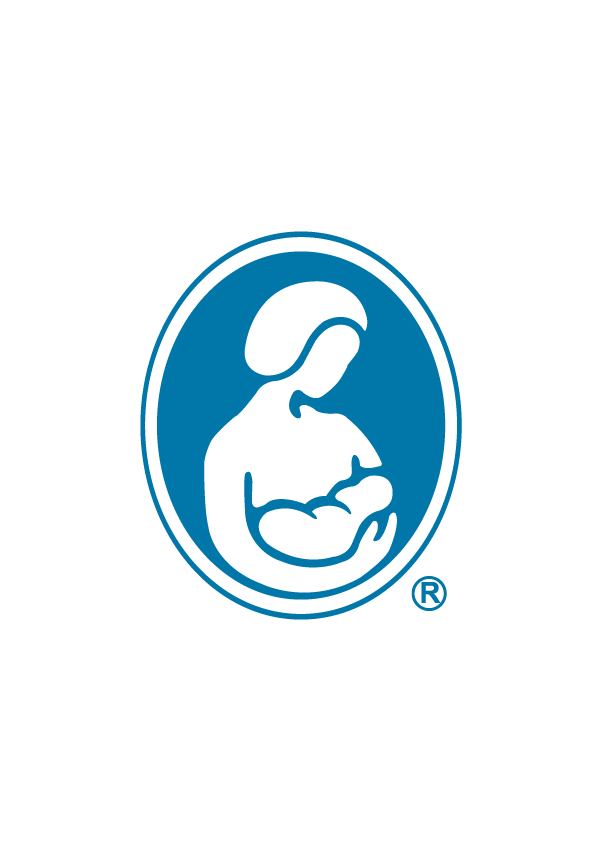Sally Myer
Nebraska
From: NEW BEGINNINGS, Vol. 23 No. 2, March-April 2006, pp. 82-83
The most common reason mothers probably choose to breastfeed is the knowledge that human milk is the superior infant food. It contains live cells, like those in blood. Some components of human milk also enhance the effects of others, so the ingredients of human milk work together. In contrast, only a small percentage of some ingredients of formula are absorbed; mixing ingredients in formula does not guarantee they will act together the way they do in human milk.
妈妈们选择母乳喂养最普遍的理由是:人乳是上好的婴儿食品,含有存在于血液中那样的活细胞。人乳含有的某些成分能够强化其他组成成分的作用效果,因此人乳的各组成成分是协同作用的。比较而言,配方奶的一些成分仅有很小的比例能被吸收;配方奶的组成成分不能保证像人乳这样发挥协同效应。
Human Milk Is Designed for Babies
母乳为宝宝量身定做
Human milk is species-specific. The milk of each mammal species has adapted to supply its offspring with what is needed for optimal growth and survival. Some species milks are relatively high in fat to lay down a thick layer of body fat, while those with high protein use it for rapid growth and maturation. Those species that need readily available sources of sugar to meet the needs of their rapidly growing brains have milk that is higher in carbohydrates. Humans are the slowest growing and maturing mammals, but also have the most advanced brains. So it makes sense that the protein content of human milk is relatively low while the level of carbohydrates is high.
人乳具有物种特异性。每一种哺乳动物的乳汁都为其后代提供生长和生存所必须的有力保证。一些物种的乳汁含有高含量的脂肪以便为自身机体储备一层厚厚的皮下脂肪层,而另一些物种的乳汁中则含有大量的蛋白质来促进机体的迅速生长和成熟。还有一些物种的乳汁中含有高含量的碳水化合物,而这正是促使大脑快速发育所必须的糖类物质的来源。人类是生长和成熟速度最慢的物种,但却拥有最先进的大脑。因此不难理解为什么人乳中蛋白质的含量较低而碳水化合物的含量较高。
Human milk contains levels of vitamins and minerals appropriate for the healthy, full-term, human infant. It is ever-changing — from the beginning of the feeding to the end, from feeding to feeding, and from day to day. The infant provides many signals that stimulate some of the changes in his mothers milk. When following her infants feeding cues, a mother can be assured that her child will benefit from those changes. For instance, if the milk taken at a particular feeding is lower in fat (fat is the most variable constituent of mothers milk), the infant will become hungry again sooner. If his cues are followed and he receives the next few feedings close together (cluster feeds), the higher fat milk he receives (fat content goes up when the breast is less full) will ensure his overall fat intake is adequate.
人乳中含有丰富的维生素和矿物质,适合健康的足月儿食用。各营养组成成分不断变化—每次哺乳的开始到结束、每一餐、每一天,乳汁的成分都会有变化。婴儿发出的信号刺激母亲的乳汁发生一些改变。迎合婴儿的喂养暗示,母亲可以确信自己的孩子将会从这些改变中获益。例如,如果某次摄取的乳汁中脂肪(脂肪是乳汁中含量浮动最大的成分)含量较低,婴儿很快又饿了。如果婴儿的暗示获得响应,得到接下来的高密度频繁哺乳(集中喂养),获取更高脂肪含量的母乳(乳房较不充盈时,母乳的脂肪含量会上升)将保证其总脂肪摄入量是充足的。
Human Milk Has Anti-Infective Properties
人乳具有抗感染特性
Breastfeeding mothers often notice that their children are sick less often than children who arent breastfed. Human milk provides different kinds of defense against disease, including secretory antibodies against specific pathogens. It also contains lactoferrin, which not only is the source of iron for breastfed infants, but also appears to have antibacterial and antiviral properties. Other components in human milk protect infants on a molecular level because their actual shape hinders certain pathogens access to the infant.
母乳喂养的妈妈们通常会注意到他们的宝宝比非母乳宝宝少得病。人乳为疾病提供不同种类的防御机制,包括抵抗特定病原体而分泌的抗体。还包括乳铁蛋白。乳铁蛋白不仅仅是母乳宝宝铁的来源,同时还能提供抗菌和抗病毒保护。人乳中的其他成分为宝宝提供分子级别的保护,原因在于它们的实际分子尺寸大小能够阻止某些病原体入侵到宝宝体内。
Because human milk has protective qualities, infants who are not breastfed have more emergency room visits, hospitalizations, and treatments with antibiotics. The protective effects extend beyond weaning. (See the table below.)
由于人乳具有保护特性,因此非母乳宝宝反而有更多的机率生病跑急诊、住院、进行抗生素治疗。母乳的保护效用延续至断奶以后。(请见下表。)
Human milk offers immunological protection against many chronic diseases. According to Outcomes of Breastfeeding versus Formula Feeding, compiled by Ginna Wall, MN, IBCLC, and Jon Ahrendsen, MD, FAAFP, human milk feeding is associated with less risk of the following diseases: celiac disease, diabetes, multiple sclerosis, sudden infant death syndrome, childhood cancer, autoimmune thyroid disease, appendicitis, osteoporosis, cardiovascular disease, helicobacter pylori infection (associated with gastric ulcers), Crohns disease, colitis, juvenile rheumatoid arthritis, obesity, tonsillitis, allergies, atopic disease, and asthma. (This comprehensive report can be found at www.lalecheleague.org/docs/Outcomes_of_breastfeeding_June_2007.pdf *.)
针对许多慢性疾病,人乳能提供免疫方面的保护。根据Ginna Wall (MN, IBCLC) 和Jon Ahrendsen ( MD, FAAFP) 编辑的著作《母乳喂养与人工喂养的对比结果》所说,母乳喂养能够降低罹患以下疾病的风险:乳糜泻,糖尿病,多发性硬化症,婴儿猝死综合征,儿童癌症,自身免疫性甲状腺疾病,阑尾炎,骨质疏松症,心血管疾病,幽门螺杆菌感染(胃溃疡相关),克罗恩病,溃疡性结肠炎,幼年型类风湿性关节炎,肥胖,扁桃腺炎,过敏,异位性过敏症和哮喘。(有关综合报告请见 www.lalecheleague.org/docs/Outcomes_of_breastfeeding_June_2007.pdf *.)
The mechanism of these apparent long-term immunologic benefits remains unclear, although theories abound. Human milk contains bioactive components that enhance the growth and development of the human infant.
尽管理论研究比比皆是,但明显而长效的免疫获益机制尚不明晰。人乳含有生物活性成分,帮助人类宝宝生长和发育。
One gastrointestinal hormone, cholecystokinine (CCK) signals sedation and a feeling of satiation and well-being. During suckling, CCK release in both mother and infant produces a sleepy feeling. The infants CCK level peaks twice after suckling. The first peak occurs immediately after the feeding. It peaks again 30 to 60 minutes later. The first CCK rise is probably induced by suckling; the second by the presence of milk in the GI tract. The drop of infant CCK levels 10 minutes after a feeding implies a “window” within which the infant can be awakened to feed from the second breast or to reattach to the first side for additional fat-rich milk. Waiting 30 minutes after the feeding before laying the baby down takes advantage of the second CCK peak to help the infant to stay asleep.
做为一种胃肠激素,胆囊收缩素(CCK)发出镇静信号,给人以饱腹感和幸福感。在吸吮过程中,母婴双方均释放CCK产生昏昏欲睡的感觉。吸吮后,婴儿的CCK水平先后达到两次峰值。第一次峰值在喂奶后立刻出现。第二次峰值在30至60分钟后出现。CCK值的首次攀升很可能是由吮吸引起,第二次则是因为胃肠道里有奶的存在。喂奶后10分钟婴儿的CCK值回落,这预示着一个机会,婴儿可能醒来轮换吃另一侧的乳房,或者重新吮吸同侧乳房,以获得更多富含脂肪的后奶。充分利用第二次CCK峰值,吃奶后不要立即把婴儿放平,而是等上30分钟,这样有助于婴儿保持睡眠状态。
Human Milk Contains Essential Fatty Acids
人乳含有必需的脂肪酸
The essential fatty acids in human milk optimize cognitive function and vision. Studies have found that premature infants who received human milk via feeding tube were more advanced developmentally at 18 months and at seven to eight years of age than those of comparable gestational age and birth weight who had received formula by tube. Such observations suggest that human milk has a significant impact on the growth of the central nervous system. Also, breastfed infants have higher visual acuity. These benefits of human milk can be attributed to the presence of long-chain polyunsaturated fatty acids, docosahexanoic acid (DHA) and arachidonic acid (AA). Although some formulas have recently added these ingredients, it is unknown if they will have similar effects long-term.
人乳中所含的必需脂肪酸具有优化认知功能和视觉作用。研究发现,与相同胎龄和出生体重,经由鼻胃管喂食配方奶的早产儿相比,喂食母乳的早产儿在18个月和七到八岁的时间段内有较好的发育。这项观察显示,人乳对中枢神经系统的发育影响重大。同时,母乳宝宝具有更高的视觉灵敏度。这些益处都要归功于长链多不饱和脂肪酸二十二碳六烯酸(DHA)和花生四烯酸(AA)的存在。尽管现今的一些配方奶粉中已经添加了这些成分,但还不确定这些人工添加的成分是否能够发挥长期的相似作用。
The hormones, live antibacterial and antiviral cells, and essential fatty acids are just some of the reasons why human milk is the vastly superior infant food. It is a truly unique substance that cannot be copied artificially.
含有荷尔蒙、活的抗菌和抗病毒细胞以及必须的脂肪酸恰恰部分解释了为什么人乳是婴儿绝对上好的食物这一观点,并且这些非凡的物质成分无法被人工复制。
Resources
Lawrence, R. and Lawrence, R. Breastfeeding; A Guide for the Medical Professional. St. Louis: Mosby. 2005.
Riordan, J. Breastfeeding and Human Lactation. Sudbury: Jones and Bartlett 2005.

 (晓琳 翻译 Shiuh-jane、Daisy审稿)
(晓琳 翻译 Shiuh-jane、Daisy审稿)

